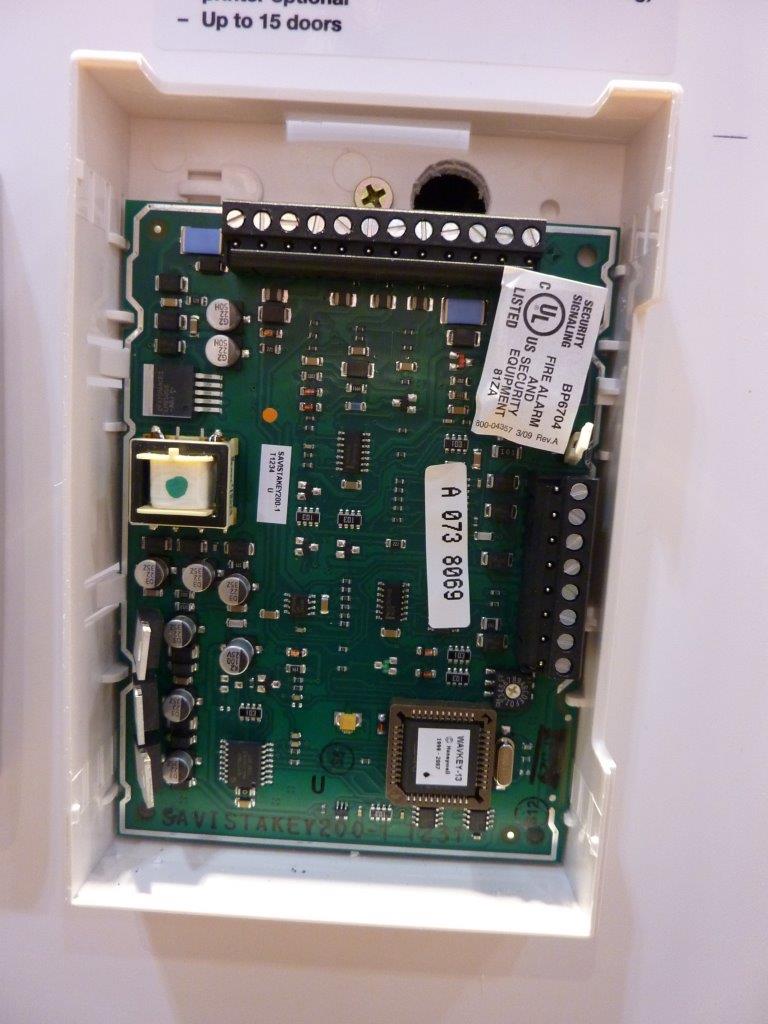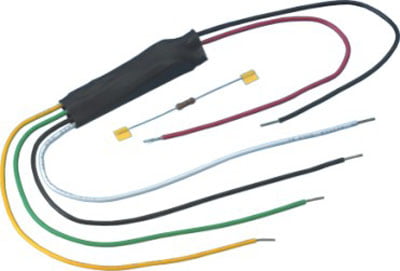Honeywell’s V-Plex bus is a polling loop designed to support Vista 120 and 250 alarm panels as well as Tuxedo, that scoops up zone inputs and distributes zone outputs across any site where it’s installed.
ONE of the neat new things I saw at Security 2014 was Honeywell’s V-Plex bus, a patented polling loop in the form of a 2-wire cable system that works with Vista 120, 250 and Tuxedo 12/48. Bus solutions have always had great advantages and V-Plex is no exception.
Fundamentally, V-Plex bus is a 2-wire cable that is installed around a facility. Zone inputs and relay outputs are then ported into the bus. The control panel that you select determines the number of devices that you can connect to the V-Plex bus.
Routing the V-Plex Bus Control panels offer zone inputs for sensing door position, the presence of smoke, humidity levels, motion, temperature levels, pump running, and other supervision systems. It offers relay outputs for connecting remotely controlled devices like lights, heating, air conditioning, motors, pumps, sirens, gates, doors, indicators, and other electric appliances.
According to Honeywell’s John Gellel, V-Plex is one of his favourite products just now and listening to him talk, it’s not hard to see why.
“I’m really excited about the potential of V-Plex,” Gellel tells me. “It’s a Honeywell protocol that works with our bigger Vista panels, the Vista 120 and Vista 250, as well as Tuxedo, that enables a single figure-8, 4-core, or Cat-5 security comms bus to support multiple devices. You simply attach your remote detection devices to the bus.
“If you buy devices from Honeywell, then each device has a 7-digit serial number that is linked to a given zone,” he explains. “All these devices are individually addressed up to a total of 250 zones on the panel and programming is at the keypad or via laptop. It’s very, very simple.
“However, if your reed switches, smoke detectors, glass breaks, PIRs, etc, are traditional sensors, you can buy a little SIM module that fits into a normal detector and has the V-Plex serial number on it. On one side the SIM module talks to a traditional sensor, on the other side it talks to the panel. This means you are not limited to just our devices.”
According to Gellel, it’s real world applications that show the power of V-Plex to greatest effect.
“We have a client who does a lot of retail distribution sheds roller door, after roller door after roller door,” he explains. “In this case, one 4-core cable is installed as a single run around the site and it handles all the doors. The bus doesn’t need to be a loop. It can be terminated in the field and that means less conduit is needed, less time is required to run the cable and it’s easier to expand the system in the future.
“Think how much labour can be saved, scissor lift hire, you don’t need DGPs and when you get back to wiring the panel, it’s not 50 cables coming in from all over the place, it’s one. But there’s not loss of functionality. Users can still see zone status and control relay outputs from the system keypad.”
Something else that’s neat about V-Plex is that you can also include a DGP and run 15 doors of access control using any Weigand reader. The way access control is bought into a system is via VistaKey, which supports up to 15 doors of seamless integration, and allows arming and disarming of a Vista security system with an access card.

VistaKey connects to the V-Plex bus and tracks employee door entry and locks/unlocks doors on schedule, restricts access based on job function, time or location and records events to an event log. It’s a cool solution. There’s also a relay module that sits on the bus with an input and an output for driving remote doors.
“V-Plex runs on a figure-8 cable so you could run a 4 or 6-core and use the spare cables for your keypad – one pair for V-Plex, and one for a keypad,” Gellel explains. “Vista systems also support wireless devices, up to 250, depending on the panel. The wireless receiver goes onto the keypads which can be connected to V-Plex, and there are repeaters across a site.”

When it comes to installing a bus to support an application that demands a star configuration thanks to the layout of a site, it’s possible to install multiple buses up to the maximum number of inputs of the panel. And if the number of required devices for the system exceeds control panel capacity, you can link up to 8 control panels together. Panel Linking unifies all of the panels and allows you to control any panel from any system keypad.
For larger buildings, or buildings with more devices, installers can use Honeywell’s Vista 4297 modules to create an extended V-Plex Bus. Although the maximum cable distance can’t exceed 4000m, the 4297 module increases the number of devices that you can connect and effectively increases the distance each cable run.
By John Adams
Features of Honeywell V-Plex include:
* Reduced costs
* Reduced power consumption
* Fast, accurate identification and response
* Reduced time and labour
* Reduced maintenance costs.








